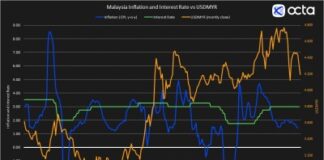
The country’s public debt has now crossed the dreaded threshold of economies that can be classified as distressed, as data published by the Bank of Ghana shows debt to GDP is now 80.1 percent at the end of December 2021.
According to the Summary of Economic and Financial data (March 2022), the total public debt has hit GH¢351.8 billion as of the end of last year, an increase by GH¢60.2 billion from same period in 2020.
Of the total public debt for December 2021, the external debt component is GH¢170 billion, which represents 38.7 percent of GDP, while that of domestic debt is GH¢181.8 billion.
Meanwhile, total revenue mobilised within the period stood at 15.4 percent of revenue, with tax rating registering a paltry 12.6 percent of GDP, far below the regional average.
This essentially puts the country among others on the continent that is debt distressed, a situation the World Bank and International Monetary Fund (IMF) have, for some years now, warned will happen, if the right measures are not taken to deal with it.
Commenting on this, Dean of the University of Cape Coast Business School, Prof. John Gatsi, explained that even though the debt to GDP has crossed 80 percent threshold, it is together with other indicators that show that the economy has plunged into distress.
“Debt to GDP ratio is only an indicator. Other ratios will have to show whether debt is sustainable or unsustainable; and whether that debt to GDP ratio is posing various risk or not, depending on other ratios.
For example, if your debt to GDP ratio is 70 percent but you are able to mobilise revenue to pay the interest on debt; and you are able to do other developmental activities like finance your capital expenditure, ensuring that arears are not accumulated, ensuring that repayment is not taking a chunk of your revenue, then you are sustainable.
But where the debt to GDP ratio is even at lower level but all your revenue is covering the interest payment such that you cannot deal with responsible level of capital expenditure, goods and services are not covered, you have to borrow to retire existing debt, your export revenue to interest of external debt is not up to the level, then, we can conclude that we are at high risk of debt distress.
And if that is making you find it difficult to do other things for the economy, then you are in distress. So, it is not necessarily the quantum of debt to GDP, it is what it doesn’t allow you to do that determines whether in distress or not.
Currently, our debt to GDP ratio is 80 percent. But with this, our revenue is barely covering interest payment and compensation. We have to borrow to amortise maturing debt. We have to borrow to be able to finance the budget. When we do that, there are critical things we are not able to do for our economy. In fact, in some cases, we have to borrow to pay interest on loans. And that is why we are a distressed economy. So, our economy is in deeper distress and that led to the downgrade by the rating agencies,” he told B&FT in an interview.
Solutions
To come out of this quagmire, Prof, Gatsi has proffered some solutions, which among others things, include setting realistic growth and revenue targets based on opportunities in the economy; keeping expenditure in check; and having a clear plan on investing borrowed monies into productive ventures.

“There are multiple solutions. The first one is to churn out productive GDP which others call inclusive GDP. We should be able to project that, with this level of GDP growth expected in 2022, it is coming as a result of this new opportunities that are available. But we are not able to do that, so our projection is not commensurate with the revenue that the growth of the economy generates.
Then, we must look at the revenue in general. We have to block loopholes, generate GDP that creates opportunities. We also need to look at our expenditure. We should aspire to ensure productive expenditure, thus, expenditure that helps the economy, and not those that deteriorate it,” he said.
He further stated that the ratio of export revenue to payment of external debt, shows that the economy is far above the threshold, which means the country is not doing well, in terms of protecting its exposure to external creditors with export revenue.
He added: “Then, we also need to deal with value added utilisation of debt because the essence of long-term debt is to use it to finance strategic activities of the country. So those strategic activities will add to GDP, contribute to revenue, and generate jobs. And that will contribute to growth of the economy,” he said.
Thebftonline


























